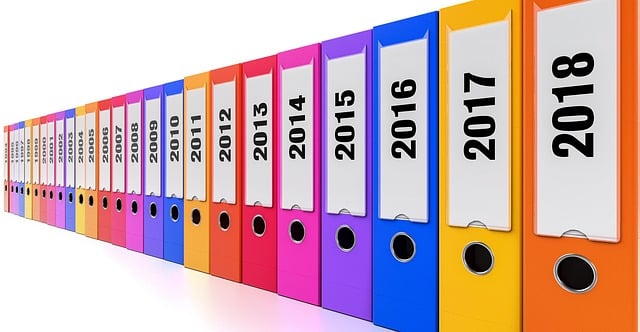UK Magazine Articles Translation Services rely on stringent editorial standards for high-quality outputs, emphasizing accuracy, cultural adaptability, and consistency in style. Utilizing native speakers, Translation Memory (TM), editing, and proofreading ensures linguistic precision, cultural sensitivity, and fluency. Adaption of tone and style for global audiences, with a focus on preserving British humor, is crucial. Specialized translators are vital for legal and medical documents due to their subject matter expertise and qualifications. Continuous evaluation against set criteria and internal quality checks maintain excellence in an increasingly competitive market, ensuring readers worldwide access engaging, accurate content.
In today’s globalized world, high-quality translations are essential for effective communication across borders. This article explores the key aspects of maintaining editorial excellence in translation services, as sought after by top UK magazine articles. From understanding stringent editorial standards to leveraging native speaker expertise and advanced tools like translation memory, each step ensures precision and cultural adaptability. We delve into specialized areas like legal and medical translations, highlighting the importance of continuous evaluation and feedback for constant improvement.
- Understanding Editorial Standards in Translation
- The Role of Native Speakers in Quality Assurance
- Utilizing Translation Memory for Consistency
- Editing and Proofreading: Ensuring Precision
- Adapting Tone and Style to Target Audience
- Legal and Medical Translations: Specialized Requirements
- Continuous Evaluation and Feedback for Improvement
Understanding Editorial Standards in Translation

In the realm of translation services, especially for UK magazine articles, understanding editorial standards is paramount to maintaining quality. These standards act as a crucible where accuracy, cultural adaptability, and stylistic consistency are refined. Translation isn’t merely about word-for-word substitution; it’s an art that requires professionals to grasp the nuances of both source and target languages. For UK magazine articles, this means capturing the essence, tone, and intended audience of the original content while adhering to grammatical and idiomatic conventions specific to English in the UK.
Editorial standards guide translators on everything from choosing appropriate vocabulary to structuring sentences for readability. They ensure that translated articles not only convey the same meaning as their originals but also resonate with the target audience. In the context of UK Magazine Articles Translation Services, these standards are often informed by industry best practices and client-specific requirements, fostering a symbiotic relationship between translators, editors, and clients to produce exceptional content that reflects the highest quality and cultural sensitivity.
The Role of Native Speakers in Quality Assurance

In the realm of UK magazine articles translation services, ensuring editorial quality is paramount. One key player in this process is the involvement of native speakers. These individuals possess not only a deep understanding of the source language but also an intuitive grasp of cultural nuances and idiomatic expressions that can be challenging to translate accurately. Native speakers act as a crucial quality assurance layer, meticulously reviewing translations for both linguistic precision and contextual appropriateness.
Their expertise helps in maintaining the original tone, intent, and flow of the article, ensuring that it resonates with the target audience. This is especially vital for UK magazine publications aiming to capture a specific cultural context. By leveraging native speakers, translation services can deliver high-quality outputs that are not just word-for-word translations but true interpretations that respect the integrity of the original content.
Utilizing Translation Memory for Consistency

Translation Memory (TM) is a powerful tool for UK magazine articles translation services, ensuring consistency across projects. It works by storing previously translated segments, allowing translators to reuse these segments in future projects with minimal variation. This method significantly reduces the time spent on repetitive translations and maintains a uniform style and tone throughout all documents.
For example, if a term or phrase appears multiple times in an article, TM can automatically insert the previously translated version, eliminating inconsistencies and saving translators’ efforts. This is particularly beneficial for UK magazine articles, where maintaining brand voice and consistency across various editions is crucial.
Editing and Proofreading: Ensuring Precision

Editing and proofreading are vital components in ensuring the accuracy and fluency of UK magazine articles translated by professional services. Skilled translators don’t merely translate words from one language to another; they tailor content to suit the target audience, preserving the original meaning while enhancing readability. Editing involves scrutinizing the translation for grammatical errors, inconsistent terminologies, or awkward phrasing. Proofreading, on the other hand, focuses on factual accuracy, ensuring that dates, names, and figures remain precise. These meticulous steps are crucial in delivering high-quality translations that meet the exacting standards of UK magazine articles. By combining expert knowledge with rigorous review processes, professional translation services guarantee that your content not only communicates effectively but also resonates with readers in a culturally sensitive manner.
Adapting Tone and Style to Target Audience

When translating UK magazine articles for a global audience, adapting tone and style is crucial to maintaining editorial quality. The target audience’s cultural norms, preferences, and language expectations should guide the translation process. For instance, what’s considered humorous or persuasive in one culture might not translate well in another. Professional translators must be sensitive to these nuances, ensuring that the translated article resonates with readers while remaining true to the original content.
UK magazine articles often have a distinct tone and style that reflects British humor, sarcasm, or specific linguistic quirks. Reputable translation services understand the importance of preserving this essence during the localization process. They employ translators who are native speakers or have deep cultural understanding, enabling them to capture the subtleties and deliver an article that reads naturally in the target language. This attention to detail is vital for keeping readers engaged and ensuring the article’s impact across borders.
Legal and Medical Translations: Specialized Requirements

In the realm of translations, certain sectors demand meticulous precision and a deep understanding of niche terminology—none more so than legal and medical documents. When it comes to UK magazine articles translation services, these specialized fields require skilled translators who are not just proficient in language but also have expertise in the subject matter at hand. Legal translations, for instance, often involve contracts, court documents, or legislation, necessitating an understanding of complex laws and terminologies that vary by jurisdiction. Similarly, medical translations deal with research papers, patient records, or pharmaceutical documentation, where even a slight misstep could have significant implications.
Professional translation services for legal and medical texts must adhere to stringent standards. They should employ translators who are native speakers in the target language and have relevant professional qualifications. Moreover, these services often incorporate rigorous quality assurance processes, including proofreading by subject matter experts, to guarantee accuracy and consistency. Such specialized requirements ensure that translated articles maintain their integrity and credibility across languages, making them invaluable for UK publications aiming to reach global audiences without compromising on editorial excellence.
Continuous Evaluation and Feedback for Improvement

In the realm of UK magazine articles translation services, continuous evaluation and feedback are paramount to maintaining editorial quality. Professional translators must actively seek out improvements in their craft by regularly reviewing their work against set standards. This involves not just checking for linguistic accuracy but also ensuring that the translated content retains the original article’s style, tone, and intended audience. Feedback from clients and peers plays a crucial role, as it highlights areas of strength and weakness, driving continuous learning and adaptation.
By implementing a robust feedback loop, translation services can progressively enhance their output. This iterative process includes post-translation reviews, client input, and internal quality assurance checks. Such ongoing evaluation not only improves the overall quality of translations but also fosters a culture of excellence within the service provider. In today’s digital era, where UK magazine articles often have global reach, adhering to these rigorous standards ensures that readers worldwide access content that is both precise and engaging.
In the realm of UK magazine articles translation services, maintaining editorial quality is paramount. By adhering to rigorous standards, leveraging native speakers, and employing advanced tools like translation memory, editing, and proofreading, service providers can ensure accuracy and consistency. Adapting tone and style to resonate with target audiences, along with specialized considerations for legal and medical translations, further enhances overall quality. Continuous evaluation and feedback loops are essential for continuous improvement, ensuring that these services remain a game-changer in the digital age.



